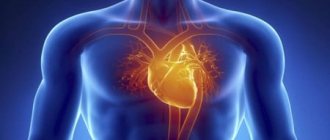Hyperkalemia is a condition in which the concentration of potassium electrolytes (K+) in the blood rises to life-threatening levels. A patient with hyperkalemia requires emergency medical attention due to the potential risk of cardiac arrest if not treated promptly.
The normal level of potassium in the blood ranges from 3.5 to 5.0 mEq/L, about 98% of potassium is found inside the cells, and the remaining 2% in the extracellular fluid, including the blood.
Potassium is the most abundant intracellular cation and is important for many physiological processes, including the maintenance of resting membrane potential, cell volume homeostasis, and the transmission of action potentials in nerve cells. Its main food sources are vegetables (tomatoes and potatoes), fruits (oranges and bananas) and meat. Potassium is excreted through the gastrointestinal tract, kidneys and sweat glands.
Hyperkalemia occurs when there is excess intake or ineffective excretion of potassium. An increase in extracellular potassium levels leads to depolarization of the cell membrane potential due to an increase in the equilibrium potassium potential. Depolarization leads to tension of sodium channels, opens them, and also increases their inactivation, which ultimately leads to ventricular fibrillation or asystole. Prevention of recurrence of hyperkalemia usually involves reducing dietary potassium intake and potassium-sparing diuretics.
Causes of hyperkalemia
The causes of hyperkalemia may be ineffective elimination of renal failure, Addison's disease and aldosterone deficiency. The following can also lead to hyperkalemia:
- Angiotensin-converting enzyme inhibitors and angiotensin receptor blockers;
- Potassium-sparing diuretics (amiloride, spironolactone);
- Nonsteroidal anti-inflammatory drugs such as ibuprofen, naproxen, or celecoxib;
- Calcineurin inhibitors;
- Immunosuppressants (cyclosporine and tacrolimus);
- Antibiotics (trimethoprim);
- Antiparasitic drug pentamidine.
Hyperkalemia may also be caused by congenital adrenal hyperplasia, Gordon's syndrome, and type IV renal tubular acidosis.
Hyperkalemia can be caused by the use of potassium supplements, potassium chloride infusions, and excessive consumption of potassium-containing salt.
Hyperkalemia
Hyperkalemia occurs as a result of the release of potassium from cells or impaired potassium excretion by the kidneys. Increased potassium intake is rarely the sole cause of hyperkalemia, since its excretion rapidly increases due to adaptive mechanisms.
Iatrogenic hyperkalemia occurs as a result of excessive parenteral potassium administration, especially in patients with chronic renal failure.
Pseudohyperkalemia is caused by the release of potassium from cells during blood collection. It is observed when the venipuncture technique is violated (if the tourniquet is tightened too long), hemolysis, leukocytosis, thrombocytosis. In the last two cases, potassium leaves the cells when a blood clot forms. Pseudohyperkalemia should be suspected if the patient has no clinical manifestations of hyperkalemia and there are no reasons for its development. Moreover, if blood is taken correctly and the potassium concentration is measured in plasma, and not in serum, this concentration should be normal.
The release of potassium from cells is observed with hemolysis, tumor collapse syndrome, rhabdomyolysis, metabolic acidosis due to intracellular uptake of hydrogen ions (except in cases of accumulation of organic anions), insulin deficiency and plasma hyperosmolality (for example, with hyperglycemia), treatment with beta-blockers (occurs rarely, but may contribute to hyperkalemia due to other factors), the use of depolarizing muscle relaxants, such as suxamethonium chloride (especially in trauma, burns, neuromuscular diseases).
Physical activity causes transient hyperkalemia, which may be followed by hypokalemia.
A rare cause of hyperkalemia is familial hyperkalemic periodic paralysis. This autosomal dominant disease is caused by a single amino acid substitution in the sodium channel protein of striated muscle fibers. The disease is characterized by attacks of muscle weakness or paralysis that occur in situations that promote the development of hyperkalemia (for example, during physical activity).
Hyperkalemia is also observed in severe glycoside intoxication due to suppression of Na+,K+-ATPase activity.
Chronic hyperkalemia is almost always caused by a decrease in potassium excretion by the kidneys as a result of either a violation of the mechanisms of its secretion or a decrease in the flow of fluid into the distal nephron. The latter cause rarely leads to hyperkalemia on its own, but can contribute to its development in patients with protein deficiency (due to decreased urea excretion) and hypovolemia (due to reduced supply of sodium and chlorine ions to the distal nephron).
Impaired secretion of potassium ions occurs as a result of a decrease in the reabsorption of sodium ions or an increase in the reabsorption of chlorine ions. Both lead to a decrease in transepithelial potential in the cortical collecting duct.
Trimethoprim and pentamidine also reduce potassium secretion by reducing sodium reabsorption in the distal nephron. Perhaps it is the action of these drugs that explains the hyperkalemia that often occurs during the treatment of Pneumocystis pneumonia in patients with AIDS.
Hyperkalemia is often observed in oliguric acute renal failure due to increased cellular potassium release (due to acidosis and increased catabolism) and impaired potassium excretion.
In chronic renal failure, an increase in fluid flow into the distal nephrons, up to a certain time, compensates for the decrease in the number of nephrons. However, when GFR becomes less than 10.15 ml/min, hyperkalemia occurs.
Undiagnosed urinary tract obstruction is often the cause of hyperkalemia.
Impaired potassium excretion is also accompanied by drug nephritis, lupus nephritis, sickle cell anemia, and diabetic nephropathy.
Diagnosis of hyperkalemia
To collect sufficient information to diagnose hyperkalemia, it is necessary to constantly measure potassium levels, because its elevated state may be associated with hemolysis in the first stage. Normal serum potassium levels range from 3.5 to 5 mEq/L. Typically, diagnosis includes blood tests for kidney function (creatinine, blood urea nitrogen), glucose, and sometimes creatine kinase and cortisol. Calculation of the transtubular potassium gradient is sometimes helpful in identifying the cause of hyperkalemia, and electrocardiography is performed to determine the risk of cardiac arrhythmias.
Treatment
Treatment methods for hyperkalemia are chosen based on the degree of its severity and the sources of origin of the disease. In the event that the potassium content in the blood plasma exceeds 6 mmol/l and there is a risk of cardiac arrest, it is necessary to immediately lower it to a safe level. To do this, the patient is injected intravenously with a heart-protecting solution of calcium chloride or gluconate, the effect of which should begin within five minutes. If the expected effect does not occur within such a period of time, and the ECG does not show positive changes, the dose of calcium chloride or gluconate is repeated. The effect of the drugs lasts about three hours. At the end of this period, the calcium solution is administered to the patient again.
When treating severe hyperkalemia in people with kidney dysfunction, it is important to remove excess potassium from the body as quickly as possible. For this purpose, hemofiltration or hemodialysis with a solution without potassium is used. They are used when it is impossible to eliminate the cause of excess potassium and in cases where other measures do not help.
Therapy that stops the development of the disease and prevents complications includes intravenous administration of glucose, insulin, and salbutamol. Patients are prescribed sodium polystyrene sulfate (ion exchange resin) with sorbitol rectally or orally. If the patient's kidneys are functioning normally, Furosemide will be used to remove excess potassium in the urine.
Causes
In general, the mechanism for increasing the level of potassium in the blood is associated with disturbances in the release of this chemical element from cells or the pathology of its excretion by the kidneys. Poor nutrition rarely becomes the real cause of the disease, since the body is able to adapt to the diet and strengthen its elimination mechanisms. Iatrogenic (that is, caused by an incorrect treatment regimen) hyperkalemia most often occurs in patients with chronic renal failure. The imbalance is usually caused by excessive parenteral potassium administration.
There is also pseudohyperkalemia. It may be associated with violations of blood sampling technique (for example, when a nurse tied a tourniquet for a long time), destruction of red blood cells, or increased levels of platelets or white blood cells. In fact, pseudohyperkalemia is a consequence of the release of potassium from the cells during blood sampling. Such an imbalance is “false”, since in general the level of potassium in the body is within normal limits, and only analysis gives increased results.
Pseudohyperkalemia can be suspected when the patient has no signs of a pathological condition and there are no logical reasons for its occurrence. Physiological hyperkalemia can be caused by increased physical activity and injury. It should be noted that this condition is usually followed by hypokalemia, that is, a lack of potassium. In general, the causes of hyperkalemia are:
- Chronic renal failure and nephropathy.
- Diabetes.
- Kidney diseases.
- Lupus erythematosus.
- Oxygen starvation of the body.
- Abuse of alcoholic beverages and drugs (in particular cocaine), excessive smoking.
- Pathologies that provoke the breakdown of proteins, peptides and glycogen, for example, long-term severe infections.
- Chemotherapy for leukemia, lymphoma, myeloma.
- Functional kidney disorders.
- Some autoimmune diseases (rare).
- Congenital anomalies of renal anatomy or physiology are the only possible cause of hyperkalemia in newborns/children.
Causes of pathology
In a person without problems with the health of the excretory system, eating food that contains large doses of microelements rarely leads to disturbances in blood counts. The main reasons for increased K+ in plasma are indicated in the table below.
Table. Factors in the formation of hyperkalemia:
| What influences | A comment |
| The excretory organs may not work properly (kidney failure) or be unable to eliminate minerals when eating foods high in potassium or honey. drugs (ACE inhibitors, Triamterene, Spironolactone and others). |
Addison's disease | Dysfunction of the adrenal glands, which produce insufficient amounts of hormones that regulate the metabolic processes of the kidneys and sweat glands. |
Sudden release of K+ from cells | A similar situation can occur when muscle tissue is destroyed, for example, with significant muscle injuries, after burns, or destruction of tumor cells. This is also possible with hemolysis or the use of large doses of hard drugs (cocaine). In such situations, the kidneys cannot cope, so the level of potassium in the blood rises. |
Use of medications | Hyperkalemia may occur when taking potassium-sparing diuretics. Non-steroidal anti-inflammatory drugs (Ibuprofen, Naproxen and others) have the same effect. |
Excessive potassium intake | In this situation, normally functioning kidneys do not have time to remove cations from the plasma. |
Note. In medicine there is the concept of “pseudohyperkalemia”. This is a situation where an artifact is formed and potassium is released from blood cells during blood collection for laboratory testing.
Symptoms of hyperkalemia
Clinically, hyperkalemia is distinguished:
- light (5.5 mmol/l);
- moderate (from 6.1 to 7 mmol/l);
- severe (more than 7 mmol/l).
Symptoms of the disease often appear only with severe hyperkalemia, and include primarily disturbances in skeletal muscle, central nervous system, and cardiac function.
Symptoms of hyperkalemia also include muscle weakness or paralysis, tingling sensations, and confusion. Hyperkalemia also interferes with the functioning of the heart muscle and can lead to life-threatening arrhythmias - bradycardia or additional contractions, which can be easily determined based on the ECG recording.
On the ECG you can often see an increase in the amplitude of the T wave , as well as its wedge-shaped shape. In the case of a higher stage of the disease, the PR interval undergoes expansion, like the QRS duration. In addition, P waves become flatter and ventricular conduction is weaker. The QRS and T waves eventually merge and the ECG waveform takes on a sinusoidal shape.
In such a situation, there is a danger of camera flickering and, as a result, slowing down blood circulation. The diagnosis of the disease is made based on the clinical picture and laboratory measurements of potassium levels in the blood serum.
Symptoms
Regardless of what caused hyperkalemia, in the early stages the disease does not manifest itself with any symptoms, but is detected during the diagnosis of completely different diseases for which an ECG is necessary. In such cases, the only sign of the disease may be a change in heart rate, but for a person this occurs unnoticed. As hyperkalemia progresses, the number of associated symptoms increases. These include:
- a decrease in the urge to urinate, therefore, because of this, the volume of fluid excreted decreases;
- vomiting that comes unexpectedly;
- stomach pain of varying intensity;
- increased weakness and fatigue of the body;
- seizures;
- swelling of the lower extremities;
- fainting (can occur quite often);
- decreased sensitivity and uncomfortable tingling sensation in the lower extremities and lips;
- progressive paralysis (may affect the respiratory system);
- human detachment and apathy.
If you do not consult a doctor in a timely manner when one or more symptoms of hyperkalemia are detected in a patient, breathing may stop and the heart may stop, which will lead to the death of the person.











